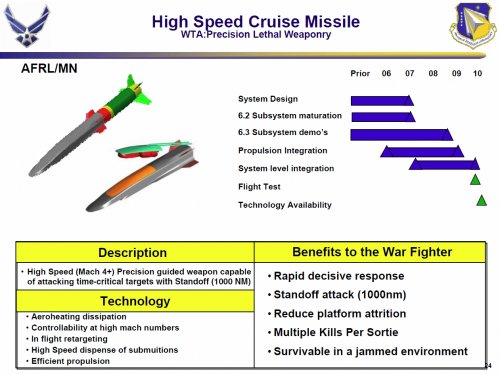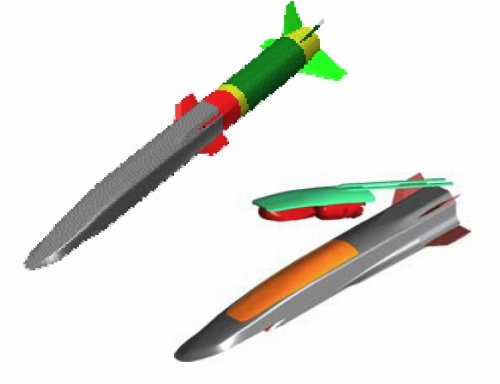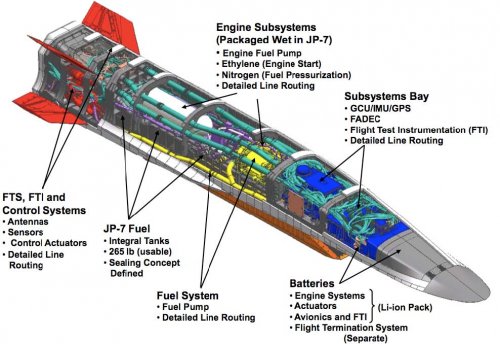shockonlip
ACCESS: Top Secret
- Joined
- 29 January 2008
- Messages
- 605
- Reaction score
- 43
sferrin said:Looks like somebody jumped the gun when they said it reached Mach 6. From Boeing's site:
"It was released while flying at approximately 50,000 feet over the Point Mugu Naval Air Warfare Center Sea Range. Four seconds later, a solid rocket booster from a U.S. Army tactical missile accelerated the X-51A to about Mach 4.5 before it and a connecting interstage were jettisoned. The X-51A's engine ignited on a mix of ethylene and JP-7 jet fuel. After a short period, the X-51A ran exclusively on JP-7 jet fuel. The flight reached an altitude of about 70,000 feet and an approximate speed of Mach 5."
http://boeing.mediaroom.com/index.php?s=43&item=1227
I must say, I'm disappointed. An ASALM test vehicle reached a higher speed (Mach 5.4) 30 years ago and it didn't have the massive booster X-51 did. Ah well, better luck next time.
ASALM was an IRR (Integrated Rocket Ramjet). So it did have a solid rocket booster
to accelerate to cruise to then start the ramjet sustainer.
Understand your disappointment about X-51 #1.
But take heart!
This stuff will work.
This is just a bump in the road.
There is a lot of new stuff in X-51 and this flight regime is not real easy to test for.
The nature of technology development is to fail and then try and fix and then fail
again, and re-iterate until success.
I haven't lost one iota of enthusiasm for scramjet or its future!
Larry




